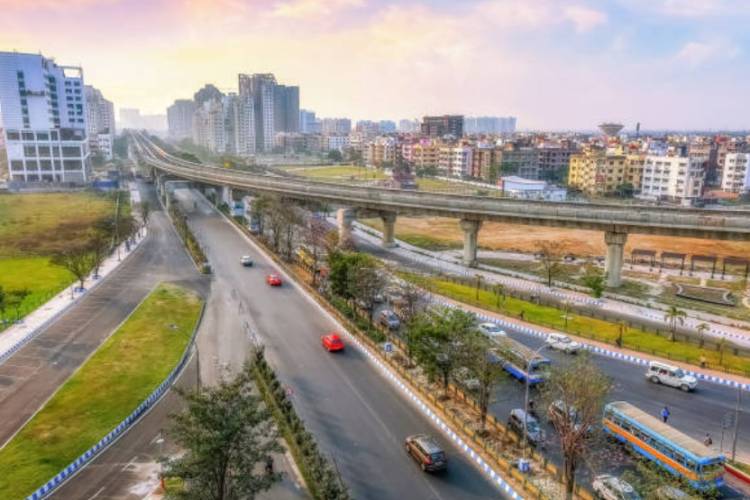
Infrastructure development is both the backbone and catalyst of economic growth. For India to transition into a developed economy, accelerating infrastructure spending is not optional — it is imperative. Yet, the country struggles with crumbling roads, congested airports, fragile bridges, and inadequate hospitals. According to the National Infrastructure Pipeline, India needs investments worth $4.51 trillion (Rs 390 lakh crore) by 2030 to sustain growth momentum and reach its $5 trillion economy target.
In a bid to unlock stalled projects and draw private participation, the government is considering a Rs 20,000 crore risk guarantee fund. Managed by the National Credit Guarantee Trustee Company (NCGTC), the fund would underwrite project risks, giving comfort to both developers and lenders. The logic is straightforward: by reducing risk exposure, the state can make private capital more willing to flow into long-gestation projects.
READ | Pulse self-sufficiency mission tests fiscal limits
The fund is expected to be particularly relevant at a time when private players, wary of land acquisition delays, policy uncertainty, and erratic cash flows, have slowed their participation in infrastructure sectors such as roads, power, and urban projects.
How a guarantee fund works
A risk guarantee fund partially underwrites the risks of infrastructure projects, especially those in early development. This lowers project-financing costs and improves access to credit. Banks gain assurance that some risks — construction delays or regulatory bottlenecks — will be absorbed by a government-backed entity. Developers benefit from cheaper financing and a stronger incentive to commit long-term capital.
Finance specialists note that guarantees can often make or break large projects. By sharing risks, lenders are more confident to extend long-term credit, and developers are more willing to move forward with investment decisions.
India’s mixed record with public–private partnerships offers a cautionary tale. Highway projects under the PPP model often ran into disputes over revenue guarantees, airports needed repeated contract renegotiations, and many urban schemes stalled on land and regulatory clearances. Guarantees may reduce risk perception, but unless contract enforcement is strengthened and regulatory frameworks made more predictable, private players will remain wary. The fund must therefore be part of a broader repair of the PPP model, not a substitute for it.
Global precedents
Other countries have successfully experimented with such models. In 2012, the UK introduced an infrastructure guarantees scheme in response to the global financial crisis. It backed over £1.8 billion worth of projects—from power plants to social housing—by offering government guarantees to lenders and bond investors. The World Bank – MIGA, (Multilateral Investment Guarantee Agency) provides political risk insurance and credit enhancement in developing economies. By covering risks such as expropriation or restrictions on currency transfer, MIGA has helped unlock billions in private capital.
The African Development Bank has deployed partial risk guarantees for power and transport projects, making them bankable and attractive to private capital. These examples highlight both the utility and pitfalls of guarantee funds. India can adapt these lessons, but must tailor them to its own institutional and fiscal realities.
There is also the question of aligning new infrastructure with India’s climate commitments. Green energy corridors, EV charging networks, and climate-resilient cities will demand vast sums of private capital. Global investors are increasingly directing funds towards ESG-compliant projects, which means that a guarantee mechanism could be designed to prioritise renewable energy, clean transport, and resilient urban systems. Doing so would not only attract foreign inflows but also future-proof India’s infrastructure build-out.
Safeguards and risks
The upside is clear, but safeguards are essential. Without them, the guarantee fund risks becoming a moral hazard. Developers may take on projects they would otherwise avoid, assuming that losses will be cushioned by the state.
To counter this, policymakers are considering mandatory minimum equity contributions from developers and premium charges linked to project risk profiles. Such conditions would ensure that developers share responsibility and do not transfer all risks to the government.
The weakest link in India’s infrastructure story is often not finance but execution. Land acquisition delays, environmental clearances, and weak dispute resolution mechanisms have derailed projects regardless of funding availability. A guarantee fund cannot by itself solve these bottlenecks. Unless institutional capacity is upgraded and governance streamlined, guarantees may end up cushioning failures rather than catalysing success.
Industry response
Industry leaders in renewables, logistics, and urban infrastructure see the proposed fund as a game-changer. They argue that access to guarantees could revive stalled projects, attract foreign investors, and channel capital into high-priority areas. The NIP task force, led by a former economic affairs secretary, has already warned that infrastructure bottlenecks pose one of the biggest constraints to the Make in India initiative. The guarantee fund could ease those constraints.
Infrastructure delivery in India is not the Centre’s burden alone. State governments bear responsibility for much of the country’s roads, power distribution, and urban facilities. Yet their fiscal stress, limited borrowing space, and reliance on centrally sponsored schemes curtail their ability to co-invest. Without easing subnational balance sheets and aligning state-level priorities, even a well-designed guarantee fund may struggle to deliver the scale of infrastructure expansion that the economy needs.
The financing challenge
Tapping global capital markets will be crucial, whether through sovereign bonds, infrastructure investment trusts, or blended finance. Yet a sovereign-backed guarantee fund will inevitably raise questions about fiscal exposure and India’s credit rating. If investors sense that contingent liabilities are piling up, it could drive up borrowing costs elsewhere. The credibility of the fund will rest on transparent accounting and clear limits on exposure.
India’s infrastructure needs are vast, but public resources are finite. Innovative financing mechanisms are therefore critical to bridge the gap. Guarantee funds, blended finance models, and public-private partnerships (PPPs) will all need to play a role.
The balancing act for the government will be to encourage private investment without exposing public finances to unsustainable risks. If well designed, the risk guarantee fund could emerge as a cornerstone of India’s infrastructure strategy—helping close the financing gap and strengthening the foundations of the country’s growth ambitions.
